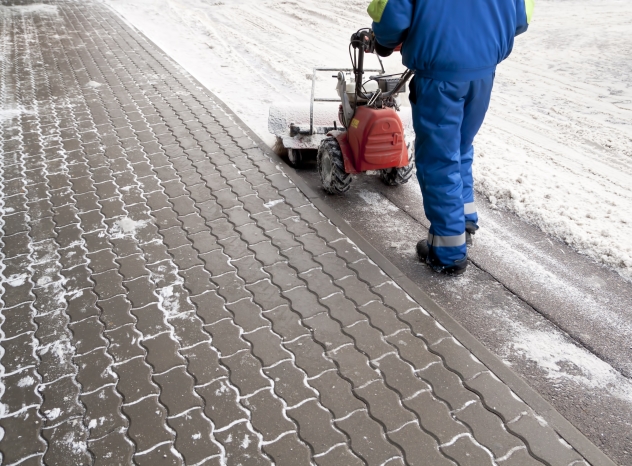THE CONSTRUCTIONIST.

OCT
11
5 ROCK SALT TIPS FOR SAFER DEICING
With over 25 years in the de-icing business, we’ve picked up some tips and tricks that can keep you safe as winter’s icy conditions roll in. Here are our five safety steps:
1. Remove the snow.
It might be tempting to toss some de-icer on snow, but you’re not making the most of it that way, and it may not work at all. Rock salt breaks up the bond between pavement and ice, so the salt has to make contact with the pavement. Use a shovel or snow blower to get this job done.
2. Spread it out.
It’s not a good idea to cluster large amounts of rock salt together. Depending on the rock salt ingredients, like magnesium, chloride, or acetate based ice melts, rock salt can be corrosive in large concentrations. It’s best to use a household spreader or ask us to help if you require a bigger job. If not, spreading it out by hand will do just fine, just be sure you’re wearing gloves to protect yourself from the salt and the cold.
Throw salt consistently to create a thin layer on the surface. If you’ve applied too much in one area you can brush it out with a broom. Each type of rock salt has different guidelines on how thick or thin your application should be.
3. Care for your surfaces.
Damage to your driveway or other paved surfaces can be caused by using too much rock salt, or from seasonal freezing and thawing cycles. Apply rock salt regularly, but don’t overdo it. Furthermore, don’t use rock salt on concrete that was paved within the last year, because the concrete needs at least 12 months to completely settle. We highly recommend avoiding rock salt on concrete, as it may potentially damage concrete. We sell many alternatives like treated bulk salt or calcium chloride you can use instead.
Your garden and lawn are other areas you should take caution protecting. Avoid spraying salt near or around areas you plant flowers or garden. If you did accidentally spray salt near your garden, you can dilute it by soaking the area with water a few times once spring has arrived. Or, you could use our Landscaper’s Choice Salt to keep your garden green.
4. Know what do in an emergency.
It’s best to keep rock salt where children can’t access it, but accidents can happen. If your child swallows rock salt call poison control at (1-800-222-1222) and follow their directions. Always keep the bag on-hand, so poison control can know what rock salt ingredients were ingested. Unless poison control has told you otherwise, don’t force your child to vomit-- it can do more harm than good.
5. Keep your pets safe.
In the winter, your pet will be walking on all kinds of salted surfaces, not just your own driveway. The salt can be drying on their skin, so wipe their paws off when you return from your walk or being outdoors. Sometimes rock salt can get lodged in-between a dog’s paws, making them uncomfortable and reluctant to walk. If your pet is hopping around, check to see if salt is between their toes. If this becomes a regular occurrence get your furry friend some booties to protect the feet.
If you have any questions about the safety of rock salt, it’s environmental impact, best application methods, or other rock salt questions, we’d love to hear from you. Here at Draglam Salt, we’ve always been an industry leader and that means focusing on safety too! Contact us or call us at our 24 Hour Salt Hotline: 1-888-907-SALT
FIND A LOCATION NEAR YOU
BY POSTAL CODE
KMBY CITY















